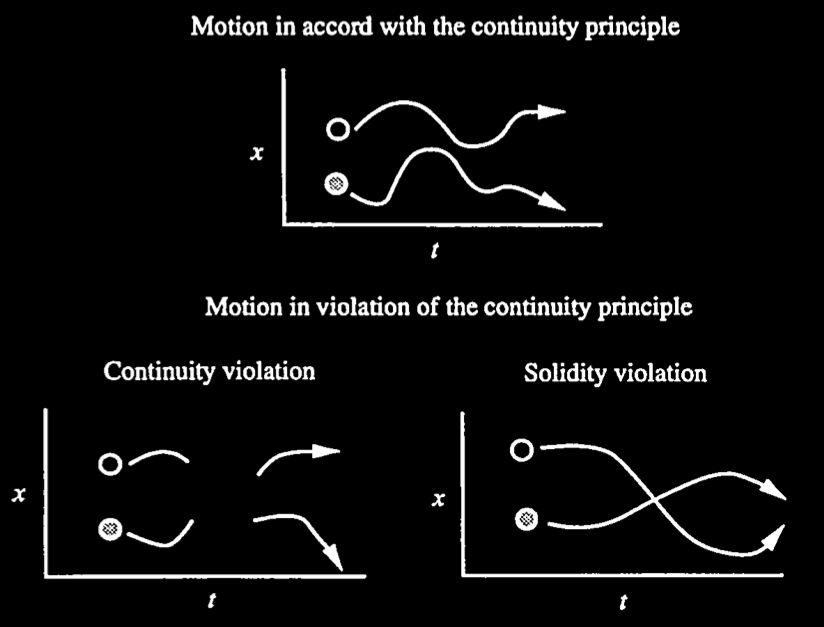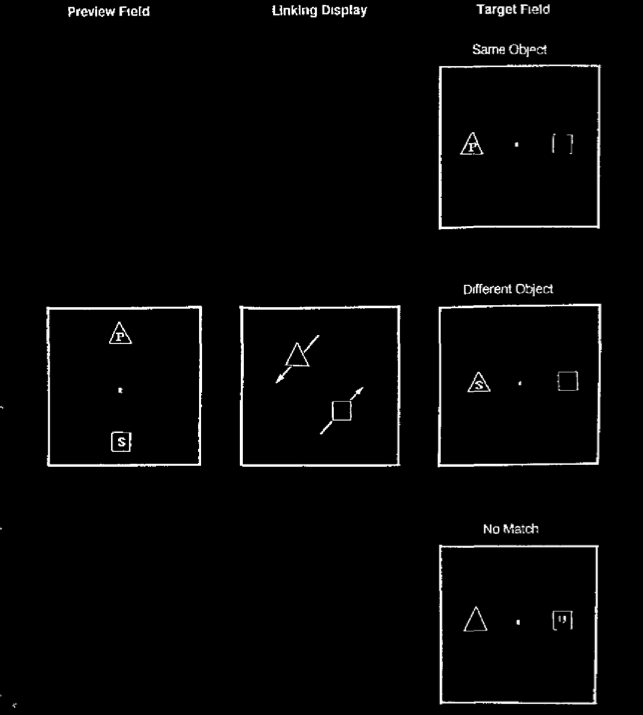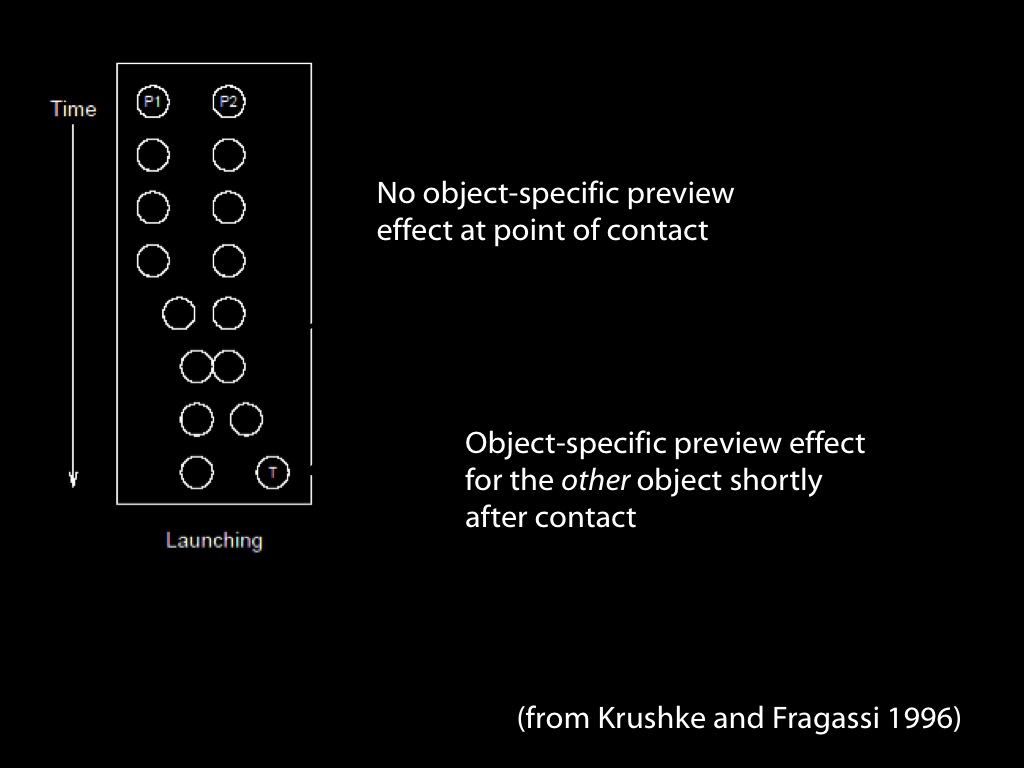Click here and press the right key for the next slide (or swipe left)
also ...
Press the left key to go backwards (or swipe right)
Press n to toggle whether notes are shown (or add '?notes' to the url before the #)
Press m or double tap to slide thumbnails (menu)
Press ? at any time to show the keyboard shortcuts
Causal Interactions and Object Indexes
object indexes track some causal interactions ...



evidence: object-specific preview effect

Kahneman et al 1992, figure 3

Why is a delay of up to around 70ms consistent with the launching effect occuring?

Michotte 1946 [1963], p. 115 table IX (part)
Why is a delay of up to around 70ms consistent with the launching effect occuring?
‘anyone not very familiar with the procedure involved in framing the physical concepts of inertia, energy, conservation of energy, etc., might think that these concepts are simply derived from the data of immediate experience.’
\citep[p.\ 223]{Michotte:1946nz}Michotte (1946, p. 223)
Perceptual systems identify certain kinds of causal interaction in the course of tracking objects.